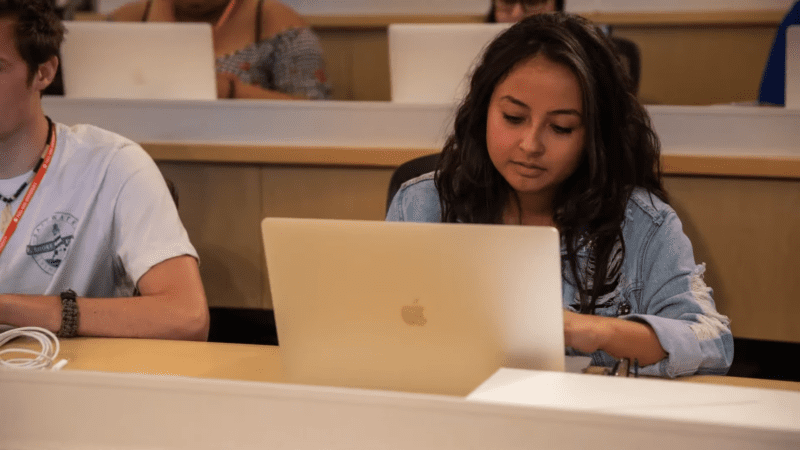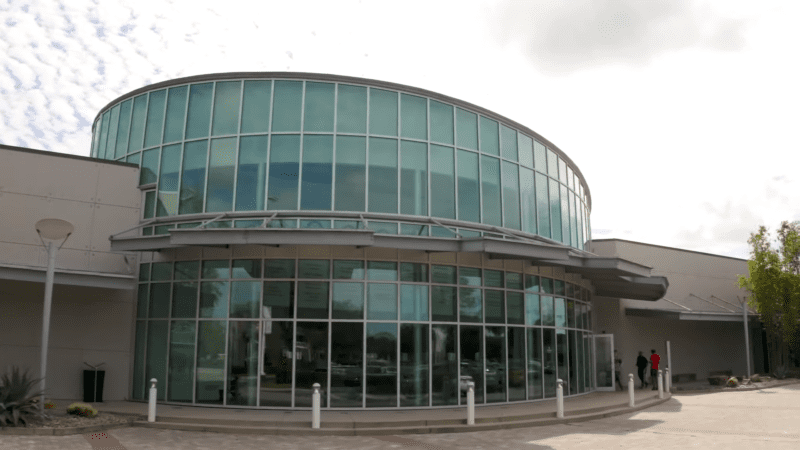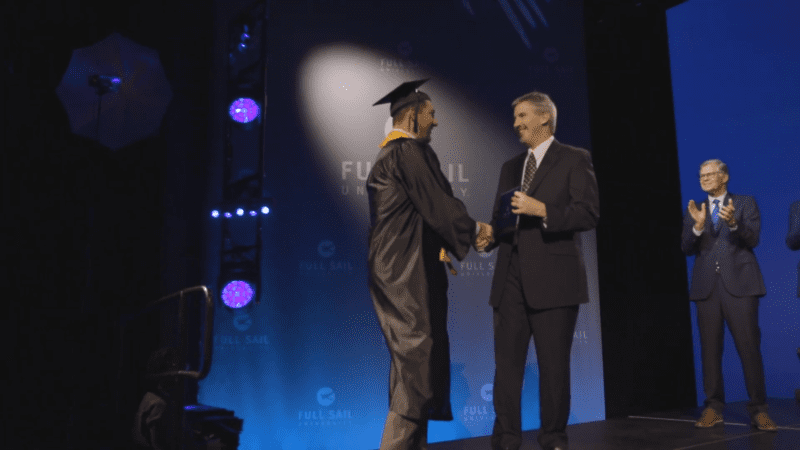Full Sail University is often noted for its innovative programs and fast-track courses in various creative fields.
Despite its reputation, the university has a relatively low graduation rate.
The main reason for this is the demanding coursework and specialized programs that require significant dedication and effort from students.
This can be overwhelming for many who are not fully prepared for the intensity and rigor of the curriculum.
More About Full Sail University and Its Low Graduation Rates

Full Sail University is a private institution located in Winter Park, Florida. It provides a variety of degree programs tailored to the entertainment, media, arts, and technology industries. Degree offerings include:
- Associate Degrees
- Bachelor’s Degrees
- Master’s Degrees
The campus environment is suburban, creating a blend of academic facilities and residential life.
Full Sail University has a total undergraduate enrollment of approximately 24,187 students according to BestColleges. Admission to the university is selective, emphasizing that prospective students meet certain criteria to be considered.
The institution has a student-faculty ratio of 36:1 as per appily.com. This ratio indicates the number of students per faculty member, which can impact the level of individual attention a student may receive.
Graduation and Retention Rates provide insight into student success. According to available data:
- The average graduation rate is 40%
- The 6-year graduation rate for first-time, full-time students stands at 29%
The university is notable for being military friendly, offering support and resources for veterans and active-duty military members.
Accreditation and Academic Standards

Full Sail University is licensed by the Commission for Independent Education, Florida Department of Education. This ensures that the institution meets specific educational standards required by the state.
Accreditation plays a crucial role in evaluating the academic integrity of the programs offered. Full Sail’s accreditation confirms adherence to the quality standards set by the accrediting body.
The university offers specialized programs that demand significant dedication and effort. These rigorous academic standards might contribute to the relatively low graduation rates, as students face challenging and intense coursework.
Enrollment Criteria and Student Demographics
Full Sail University has an open enrollment policy, which means admission requirements are less stringent than those of traditional universities. This policy aims to provide educational opportunities to a broader range of students, often attracting individuals who may not meet the typical academic criteria of other institutions.
Student Population Overview
- Total Enrollment: 26,737
- Undergraduate Students: 25,532
- Graduate Students: 1,205
Gender Distribution

- Male: 68% (18,303 students)
- Female: 32% (8,434 students)
Racial and Ethnic Composition
- White: 36.1%
- Black or African American: 28%
- Hispanic or Latino: 18.3%
- Two or More Races: 5.94%
- Asian: 1.89%
- American Indian or Alaska Native: 0.681%
- Native Hawaiian or Other Pacific Islanders: 0.217%
Geographic Diversity
- Out of State Students: 65.36%
- Out of Country Students: 0.81%
- Student Location Diversity Score: 95 out of 100
The student body represents all 49 states and Washington D.C., reflecting significant geographic diversity.
Financial Considerations and Debt

The financial burden of attending Full Sail University is significant for many students. Tuition and fees for some programs can reach or exceed $94,000. This high cost can be daunting and often leads to substantial student debt.
Household income plays a significant role in determining the amount of aid students might receive. For households earning between $0 – $30,000, the average grant and scholarship aid received is around $7,822 according to Bankrate. Even with such aid, the remaining costs still represent a considerable financial load.
Breaking down the costs:
- Tuition & Fees: Up to $94,000
- Room & Board: Varies by location
- Books & Supplies: Additional expenses
Student Support and Resources
Full Sail University offers various resources aimed at helping students succeed. Academic advising is available to guide students through their programs and ensure they meet graduation requirements.
Tutoring services provide additional academic support in challenging subjects. These services are accessible both in-person and online to accommodate diverse schedules.
The Career Development Department assists students with job placement by offering resume workshops, interview coaching, and networking opportunities.
Students have access to the Full Sail Library, which offers a range of digital and physical resources. This includes textbooks, academic journals, and industry-specific publications.

Technical support is also provided to help students navigate the university’s online platforms and resolve any technical issues they may encounter. This ensures that students can focus on their studies without unnecessary disruptions.
Mental health resources include counseling services to help students manage stress and other personal issues. Confidential counseling sessions are available to provide emotional and psychological support.
Students are encouraged to join student organizations and clubs to enhance their university experience. These organizations provide social, academic, and professional opportunities, fostering a sense of community.
Workshops and seminars are regularly hosted to address various academic and career-related topics, such as time management, study skills, and industry trends. These events help students stay informed and prepared for their future careers.
Comparative Analysis with Other Institutions

Full Sail University’s graduation rate is a point of concern for many prospective students. To provide context, it helps to compare Full Sail with other similar institutions.
Graduation Rates
- Full Sail University: Approximately 27% for four-year programs.
- Savannah College of Art and Design (SCAD): Around 66%.
- Art Institute of Atlanta: Approximately 29%.
Cost of Attendance
- Full Sail University: Tuition can reach or exceed $94,000.
- SCAD: Estimated annual cost exceeds $38,000.
- Art Institute of Atlanta: Roughly $17,000 per year.
Retention and Student Support

- Full Sail University: High dropout rates, largely attributed to open admission policies and lack of drive or discipline among some students (Reddit review).
- SCAD: Better student support and academic counseling.
- Art Institute of Atlanta: Varied student support services though somewhat limited.
Accreditations and Rankings
- Full Sail University: Accredited by ACCSC, recognized for video game design.
- SCAD: Accredited by SACSCOC and offers a wide range of top-ranked programs.
- Art Institute of Atlanta: Accredited by ACICS, with specialized programs in culinary arts and design.
Comparing these attributes helps highlight both strengths and weaknesses. Each institution provides unique opportunities and challenges, influencing their respective graduation rates and overall student success.

